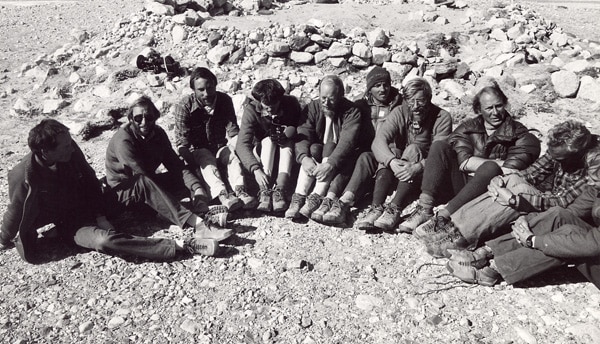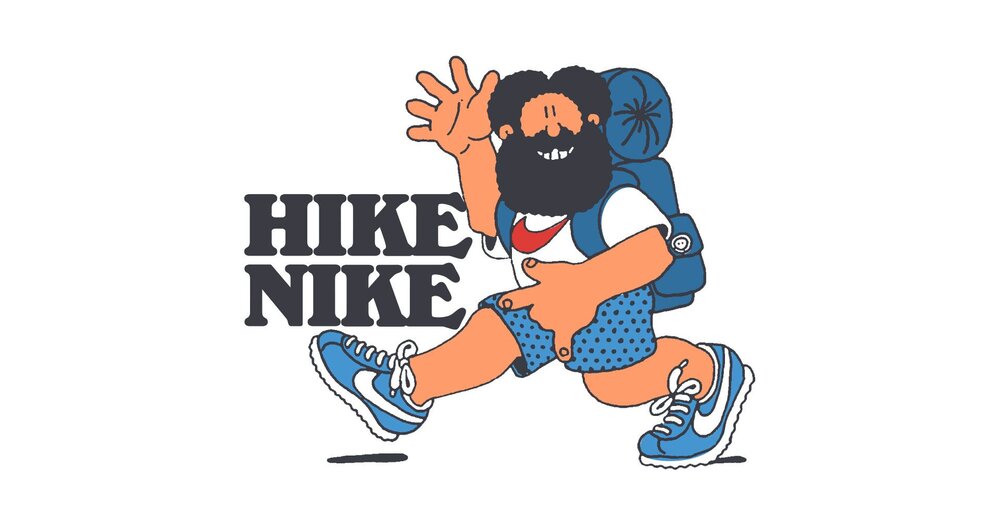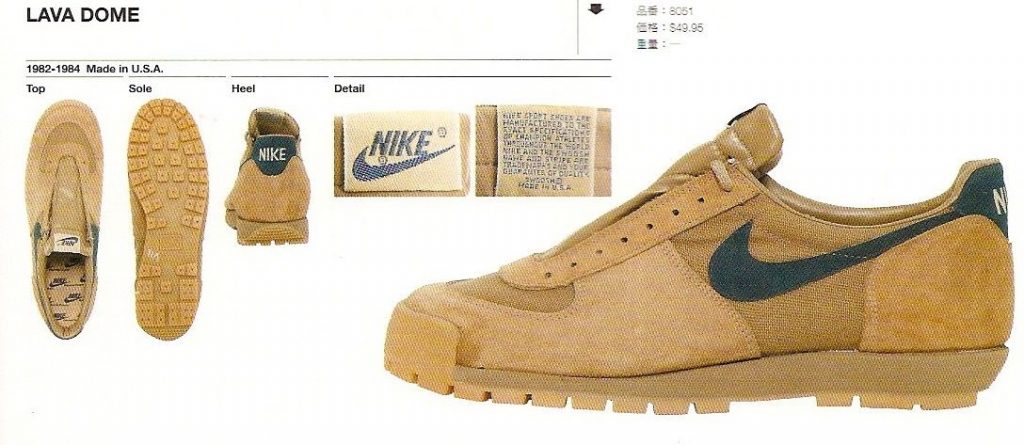
In Proper Mag 21, way back in 2016, we somehow convinced the late great Gary Warnett to write an extensive piece on the history of one of the world’s most interesting trainers: Nike’s Lava Dome.
The history of the Lava Dome is naturally entwined with the history of ACG, and while there’s extensive reading out there about ACG, there’s less focused purely on the Lava Dome, and even less with such a succinct and knowledgable voice as Warnett’s. Warnett traces the development of the shoe through its various morphologies and iterations, from the mountain to the streets, and everything in between.
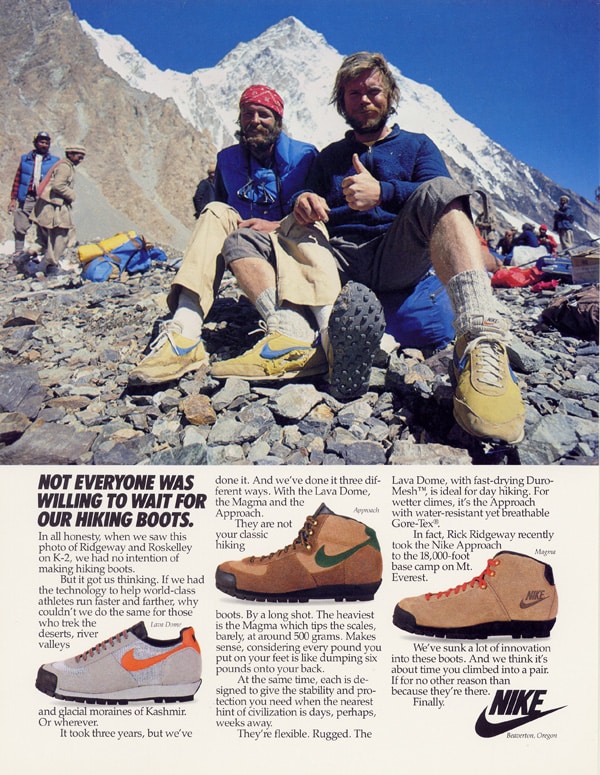
Words: Gary Warnett
The Nike Lava Dome remains something of a fan favourite. Preempting a time of ostentatious technologies, this low cut, rugged running shoe has caught the attention of traditionalists, heritage blokes and contemporary trainer types. Its looks betray its age — originally released in 1981, its connection to the coveted All Conditions Gear range that released almost a decade later is evident without any attached history lesson. That doesn’t mean it doesn’t have a story worth telling.
Two athletes operating far above a youthful Nike’s usual track, field and court types were integral to the Lava Dome’sdevelopment. Mountaineers and explorers Rick Ridgeway (a man now heavily involved in Patagonia’s environmental affairs) and John Roskelley had become the first Americans to scale K2 — the second highest mountain in the world — in 1978. During that well documented Karakoram excursion, a smiling Ridgeway and Roskelley had been photographed at camp wearing some battered and Shoe Goo reinforced LDV running shoes.
Released the same year as the intrepid team’s upward trip, the LDV stood for Long Distance (appropriate, given K2’s 8,611-metre upward elevation) and the Vector last that several Nike runners of the time had been built on. It was a popular design that ushered in an era of Asia-made bestsellers for the brand, with mesh, suede and a recognisable flared midsole. The LDV would be the basis for 1978’s strange Night Trak shoe; a slick sparkly soled silver and red model (which briefly became a roller skate prototype) created for Studio 54’s staff and loyal customers with disco dancing in mind. That shot, and the shoe on the duo’s feet would inspire a hiking equivalent.
The early 1980s ushered in new performance innovations for outdoor gear. GORE-TEX liners for shoes and a fresh breed of running shoe/boot hybrids entered the market. An appetite for lightweight hikers rather than the leather boots with their lead-like feel led to a lot of incredible designs. adidas — a longtime creator of boots, given their Bavarian roots — had created their Super Trekking model for Reinhold Messner in 1978 for his Everest ascent and New Balance would consult on the 1982’s Rainier boot for New Balance, having worn a pair of the brand’s (presumably CT) tennis shoes and been impressed by the comfort.
Given Nike’s Oregon location, several Nike staffers were no strangers to the trails, and a promo sticker with a bearded cartoon character in Cortez from around 1979 had the words “NIKE HIKE” on it. The Lava Dome line was put into development, starting with the Lava Dome shoe. Released in 1981, this design — attributed, alongside its siblings, to the superbly named Trip Allen — incorporated a similarly distinctive flare at the heel, but a hardwearing take on Bill Bowman’s famous Waffle pattern, raised rubber forefoot, a bellowed tongue to keep dirt out and quick drying, rugged Duro-Mesh rather than the traditional synthetic mesh — flexible and resilient, it took the LDV genetics far further, while retaining what appeared to be a homage to the running shoe’s grey and orange colourway.
In fact (and this remains unanswered by any Nike employees thus far), while a Lava Dome is a natural phenomenon, is it a coincidence that its initials are L.D. like its inspiration?
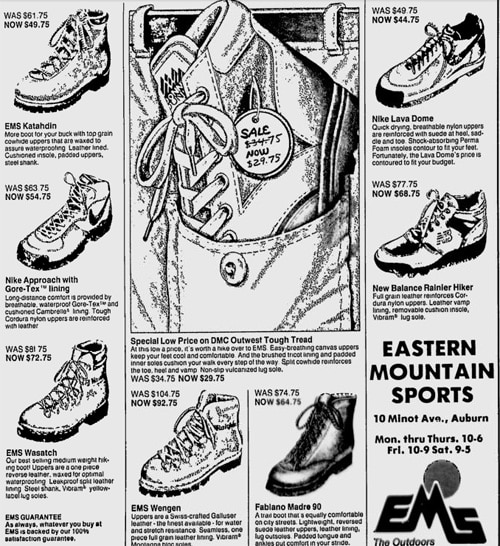
In 1982, the Lava Dome was joined by the Magma boot and the Approach — the first-ever Nike shoe to use GORE-TEX technology. Driving popular, the Lava Dome would stay in the Nike line until the mid-1980s. While it was hardly the most glamorous of designs compared to its shiny Nike shelf mates (though downright sleek compared to nearly every other hiking offering) sharp-eyed viewers of all things early 1980s might spot it a few times, notably sci-fi mini-series and TV show V, where lead character Mike Donovan, played by Marc “Beastmaster” Singer, wore a pair to death while combating reptilian visitors.
The shoe stayed in the Nike line until 1985 until it was superseded by other Nike trail designs. Different earthy makeups were released and different materials, including Cordura, were applied during its early lifespan. By 1987, Nike had seen the potential in a booming outdoor market and began planning their All Conditions Gear line.
Shoe sequels have been part of the industry since Converse kept their All Star in a state of constant upgrade and Adi Dassler couldn’t resist tinkering with his designs as new technologies were introduced and slews of rivals arrived on the shelves. There are great follow-ups and there are forgotten ones, but has any shoe ever had a name as excellent as 1988’s Son of Lava Dome?
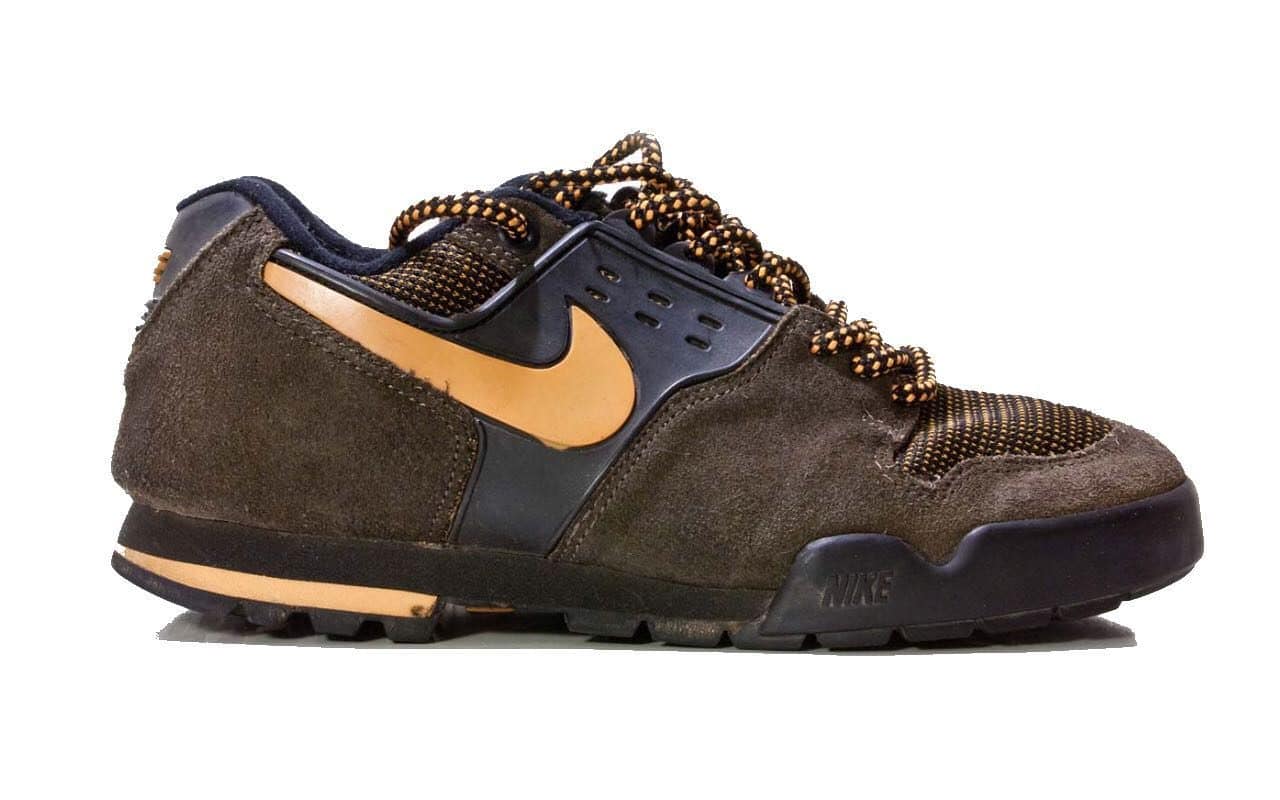
During its downtime the classic silhouette had sired an offspring that built on the original’s resilience and upped the comfort. That shoe and its sibling, the Lava High, became favourites at both street and mountain level. In 1989, ACG was officially launched, and these shoes fell under that category.
The Dome name would recur in the ACG line time and time again, but the Lava Dome 2000, released in 1996, was one of the most memorable follow-ups. Upped to a mid top, this model was heavily promoted in its day and incorporated unique sticky rubber traction that made every wear akin to walking on a cola drenched cinema floor. That model was confusingly followed by the LavaDome 2002 in 1997, which was a mlld upgrade of its predecessor.
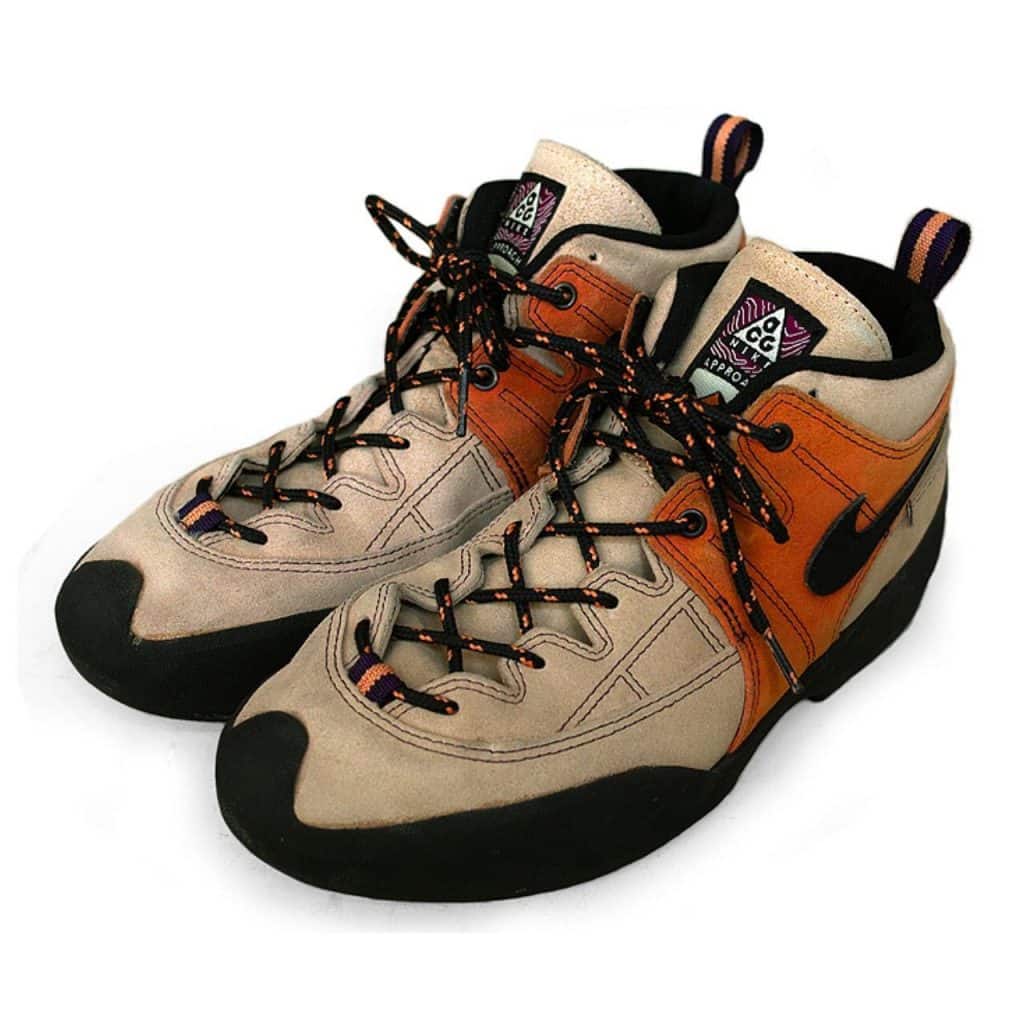
By 1999, Nike’s trail designs were in vogue (literally in Vogue when they ran a lengthy feature on the Terra Humara) and these no-nonsense performance pieces were being twinned with Maharishi trousers on bleary-eyed B-listers clumsily exiting the Met Bar. Fittingly, the shoe that spawned this entire Nike genre was reissued that year and given a slight upgrade with the addition of air and an upgraded sole pattern. That the shoe was already at drinking age by that point is remarkable — even alongside brand-new designs, Lava Dome still looked relevant. Not even the patronage of Jamie Oliver at his laddish apex could sully it.
For years, the Lava Dome sat dormant as a cult favourite. There were low key resurrections, including a 2007 reissue ahead of the Magma and Approach’s resurrection for the 20th-anniversary of ACG. In 2011, spearheaded by a subtle collaboration with American retailer Steven Alan, the shoe was back again with some responsive bounce via a sliver of responsive Zoom Air cushioning.
2016’s Lava Dome Ultra release, cored out and significantly lighter, felt like a step too far into unnecessary alteration for many. A raised heel exaggerated the original silhouette, despite increased comfort. Despite being on and off the market for 35 years, the look is timeless and only ever needed an MOT every few years rather than a complete revamp. We can thank two grinning, bearded gents for instigating this design and a cherished sub-genre. Long may the Lava Dome reign.
